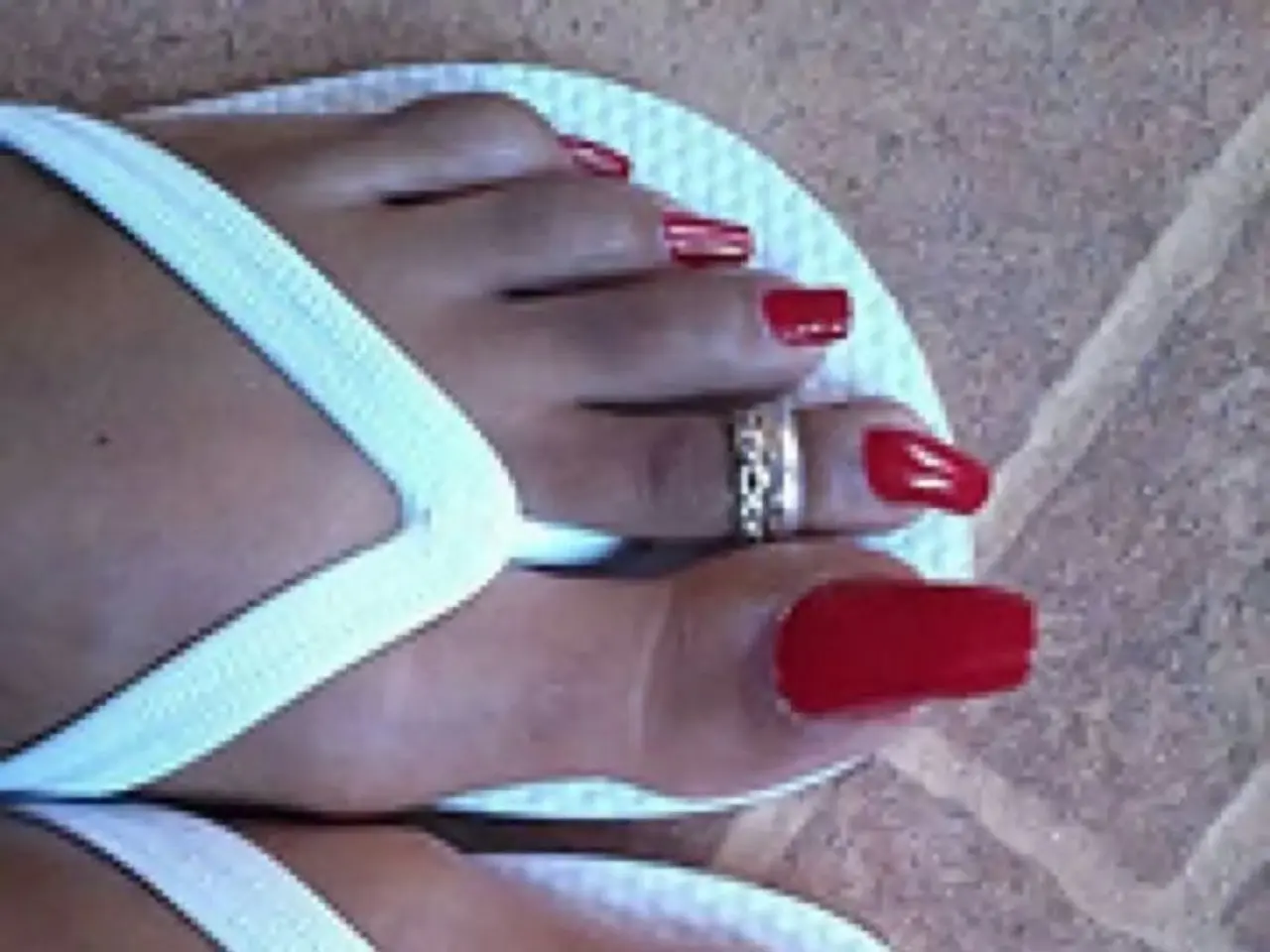Toe Injury Severity and Remedies: Understanding When Medical Attention is Necessary and Available Treatments
A stubbed toe or a broken toe are common injuries that can occur unexpectedly, causing discomfort and pain. Understanding the differences between these two injuries is crucial for proper treatment and recovery.
A stubbed toe occurs when a person hits their toe suddenly, often due to kicking into a wall, tripping over an object, or catching the toe on a gate. The immediate result is usually intense pain, followed by swelling and sometimes minor bruising. However, the toe does not typically deform or lose its shape.
On the other hand, a broken toe results from more severe trauma, such as dropping something heavy on the foot or a sports injury. Symptoms include significant pain, swelling, bruising, possible nail injury, and sometimes deformity of the toe. Difficulty walking or wearing shoes is common. In some cases, the toe may appear crooked or misshapen.
The R.I.C.E. method (Rest, Ice, Compression, and Elevation) can help relieve pain for both injuries. For stubbed toes, R.I.C.E. is often the only treatment required. However, for broken toes, buddy taping (taping the broken toe to an adjacent toe) or splints may be necessary to stabilize the injured toe. In severe cases, medical intervention such as X-rays, surgery, or the use of protective footwear like a hard-soled shoe, walking boot, or crutches may be required.
It's essential to seek medical attention if the pain is severe and does not go away after several hours, it is difficult to walk or to put weight on the foot, the toenail falls off or the area around it is very swollen, there are signs of infection around the toenail, or if the injury is suspected to be severe. Ignoring a broken toe can lead to improper healing and long-term discomfort.
In some cases, a subungual hematoma (a spot of blood under the toenail) may occur, causing large blood spots and intense, painful pressure. This condition may require medical drainage to relieve the pressure and prevent further complications.
In conclusion, understanding the differences between a broken and a stubbed toe is crucial for proper treatment and recovery. While both injuries can cause discomfort, a broken toe usually requires more extensive treatment and may need medical attention. If in doubt, it's always best to seek professional advice to ensure proper healing and avoid long-term complications.
- Beyond common injuries like a stubbed toe or a broken toe, there are various types of medical conditions that require continuous attention and care.
- Diabetes, for example, is a chronic disease that affects a person's ability to regulate their blood sugar levels, potentially leading to serious health complications if not managed properly.
- Sprains and strains, common in sports, can also cause discomfort and require treatments such as rest, ice, compression, and elevation.
- Depression, a mental health issue, can manifest across a variety of symptoms and may require therapies and treatments including medication, cognitive behavioral therapy, or lifestyle changes.
- Psoriatic arthritis, an autoimmune disorder, can cause joint pain, swelling, and skin issues, and may require medical intervention and a combination of therapies for management.
- Arthritis, another common chronic disease, affects the joints and can lead to degenerative changes in the body over time, requiring long-term management strategies including medication, physical therapy, and lifestyle changes.
- Predictive science in healthcare, including the use of data and AI, is being increasingly employed to better diagnose and treat chronic diseases and manage workplace-wellness initiatives.
- Recognizing the importance of health and wellness, many organizations now prioritize implementing workplace-wellness programs to address employees' medical conditions and chronic diseases.
- Nutrition, fitness, and exercise are essential components of a healthy lifestyle, playing a crucial role in maintaining cardiovascular health, digestive health, eye health, hearing, and overall well-being.
- Cancer, a major concern worldwide, requires a thorough understanding of its various types and treatment options, including surgeries, chemotherapy, radiation, and targeted therapies.
- Respiratory conditions such as asthma, COPD, and pneumonia can affect a person's breathing and quality of life, necessitating proper management through medication, lifestyle changes, and sometimes hospitalization.
- Neurological disorders like multiple sclerosis, Parkinson's disease, and epilepsy can affect the nervous system and require specific treatments to manage symptoms and prevent complications.
- Skin conditions like eczema, psoriasis, and acne can affect the appearance and health of a person's skin, requiring skincare routines, medications, and sometimes dermatological treatments.
- Medicare, a healthcare program for seniors and certain individuals with disabilities, is an important resource for addressing the healthcare needs of the aging population, including managing chronic diseases and conditions.
- Emphasizing the importance of preventative care and addressing early signs of health issues, healthcare providers increasingly promote programs focused on health education, screening, and early intervention to better manage chronic diseases and prevent the onset of conditions like cancer and neurological disorders.




